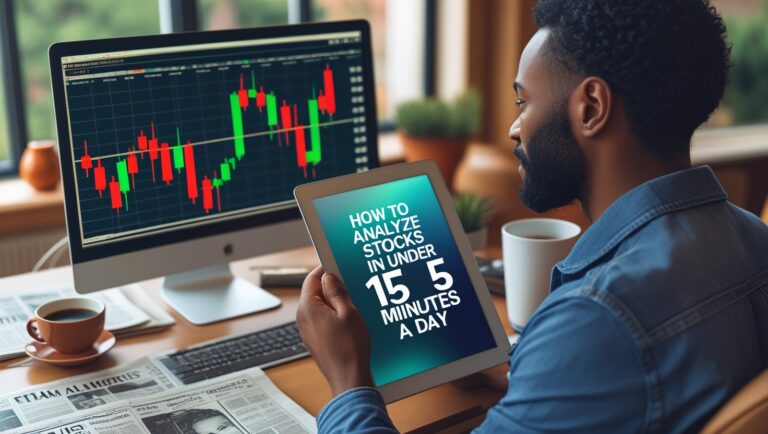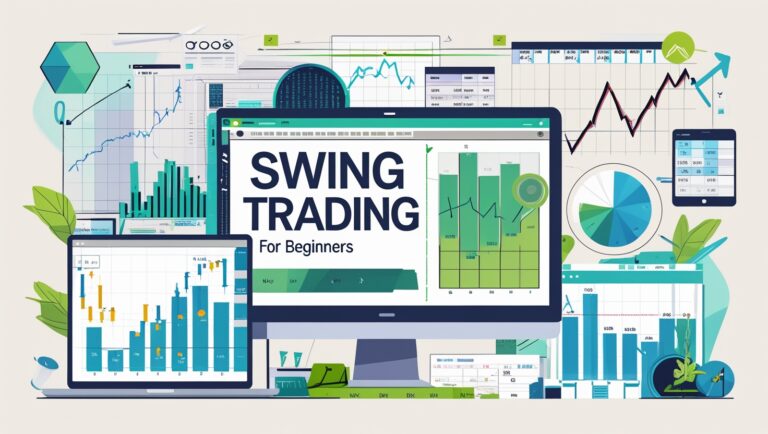From Watchlist to Profit: My Daily Stock Trading Routine Explained
From Watchlist to Profit: My Daily Stock Trading Routine Explained
If you’re tired of complicated trading strategies with too many indicators and no real structure, I get it. When I first started trading, I was overwhelmed by information. But over time, I developed a simple, repeatable routine that helps me find potential stocks before the market opens — and turn my watchlist into real profit.
In this post, I’ll walk you through exactly how I trade daily, how I build my 6-stock watchlist, and how I’ve used this system to pay my bills with stocks consistently. If you’re serious about learning the exact steps I take — I also put everything into a step-by-step guide which you can access right here in my ebook.

Table of Contents
Why You Need a Daily Routine as a Trader
Most new traders fail because they jump into the market without a plan. They chase alerts, copy random picks from social media, or let emotions take over.
That used to be me — until I built a process that runs like a system. Every morning, I stick to a checklist. No guessing. No hype.
Here’s how my routine works.
Step 1: Wake Up Early and Scan Pre-Market (8:00 AM EST)
I start scanning before most traders are even awake. Between 8:00 AM and 8:30 AM EST, I use free stock screeners to spot what’s moving.
What I look for:
- Volume spikes
- Pre-market gappers
- News catalysts
- Small-cap or mid-cap momentum stocks
I only focus on stocks that show early life. If it’s not moving before 9:00 AM, I skip it.
Step 2: Narrow It Down to 6 Stocks Max
This part is crucial.
I never overload my watchlist. I believe in quality over quantity. That’s why I limit myself to 6 stocks per day.
Why 6?
- It keeps me focused
- I can track price action better
- It prevents FOMO and overtrading
If you want to know how I filter those 6 stocks down and exactly what criteria I use, I explain everything inside my ebook:
👉 Pay Bills With Stocks — My Full Strategy
Step 3: Map Out Key Levels Before the Open
For each stock on my watchlist, I identify:
- Pre-market highs/lows
- Major support and resistance
- Any news-related moves
I don’t use 20 indicators. I rely on price action and volume behavior. The cleaner the setup, the more confident I am.
Step 4: Watch the Open (9:30 AM EST) — But Don’t Jump In
This is where most traders lose money — they jump in as soon as the bell rings.
I wait. I observe the first 10–15 minutes to see:
- Which stocks hold pre-market levels
- Whether volume confirms the move
- If it’s just a fakeout or a real breakout
I only enter after I get confirmation. Sometimes I trade at 9:40, sometimes at 10:00 — but I don’t rush.
Step 5: Lock in Gains & Repeat
Once I’m in a trade, I have a clear risk and target in mind. I don’t hold and hope. I’ve learned that small consistent wins are what pay the bills — not lottery plays.
Once I’m done for the day (usually by 11:00 AM), I review what worked, journal my trades, and get ready to do it all again the next day.
How This Routine Helped Me Pay My Bills with Stocks
This isn’t theory — it’s how I live. I don’t trade for fun. I trade because I need results. And this routine has helped me build consistency.
That’s why I created my ebook:
👉 “Pay Bills With Stocks” — My Strategy Explained
Inside, I show:
- The exact tools I use
- My full checklist
- How I avoid emotional trades
- And how to spot momentum before 9:30 AM
If you’re serious about learning how I do it and want to start with a simple, proven process, I invite you to check it out.
Final Thoughts
The stock market doesn’t reward randomness. It rewards routine, discipline, and clarity. If you’re tired of overcomplicating things or following strategies that don’t match your life — simplify.
This routine has helped me turn chaos into cash flow.
If you want to learn it, it’s all here:
👉 Get the Ebook Now
And if you’re just starting your journey, stick around — I post new content on this blog regularly to help you build a system that works for you.
I’ve tried almost every trading system out there — from complicated multi-indicator setups to following live Discord alerts. But none of that gave me real peace or consistency. What finally worked for me was cutting out the noise and sticking to a process I understood. That’s what I teach in my ebook — something that actually works for regular traders like me.
Many people ask me why I only choose 6 stocks every morning. The truth is, it keeps my focus sharp. If I had 10 or 15 tickers, I’d get distracted and miss key setups. With just 6, I can stay dialed in and trade with confidence. That clarity alone helped me reduce losses dramatically.
When I say I trade to pay bills, I mean it literally. This isn’t some side hustle for me. It’s how I cover rent, food, and expenses. And because of that, I don’t treat trading like gambling. I treat it like a business — one with daily structure and rules. That’s also why I wrote this ebook, so I could show others how I built that foundation.
I also want to be clear: I don’t win every trade. I lose like anyone else. But because I have a plan, my wins are bigger than my losses. And over time, that’s all that matters. I track every trade I make, I journal the reasons behind it, and I review it weekly. That habit alone changed my results.
A big part of my edge comes from pre-market scanning. Most people wait until the bell rings — but by then, I’ve already done my research. I look at what’s gapping up, what’s in the news, and what’s breaking volume thresholds. That’s how I prepare, and that’s how I’ve found some of my biggest plays before anyone else talks about them.
Another mistake I see often is people getting emotional with their trades. I’ve been there — holding a loser because I “felt” it would turn. That mindset cost me a lot. Now, I trade based on price action and key levels, not emotion. This mental discipline is something I talk more about inside my ebook because it took me months to master.
I don’t use expensive trading tools. Everything I use is either free or affordable. There are great free stock screeners, free news scanners, and even charting platforms that offer what I need. I break it all down in the guide, because I want people to know that you don’t need to spend a fortune to get started.
I’ve also created personal rules for trading days. For example, if none of my 6 stocks are moving clean at the open, I simply don’t trade. I used to feel like I had to trade every day. Now, I’d rather miss a trade than force one. That mindset shift alone made me more profitable.
One of the best things about this routine is that it allows me to finish trading early. Most of my trades happen between 9:40 and 11:00 AM. After that, I’m done. I can go live my life, handle other projects, or plan for the next day. This lifestyle freedom is one of the biggest benefits I’ve gotten from trading the way I do.
I always tell people: trading doesn’t have to be complicated. You don’t need 10 monitors or 15 indicators. You need a solid process and discipline. That’s it. And if you’re not sure how to create that for yourself, you’re welcome to start by learning my process in Pay Bills With Stocks.
The best part? I built this system from scratch, tested it, refined it — and now it runs smoothly. It’s not perfect, but it’s mine. And I’m confident that if you apply it with consistency, it can work for you too. My goal with StockFlowReport.com is to continue showing others how to do just that — the real way.
If you’re just getting started and feel overwhelmed, you’re not alone. I’ve been there. The best thing you can do is learn from someone who’s walked the path and is willing to share the steps. That’s exactly why I created my blog, my content, and my ebook — to give you a shortcut I never had.

Stay ahead in the stock market! Subscribe to our newsletter and receive exclusive stock flow reports, trading insights, and actionable tips directly in your inbox. Join thousands of traders who get our updates first.








One Comment